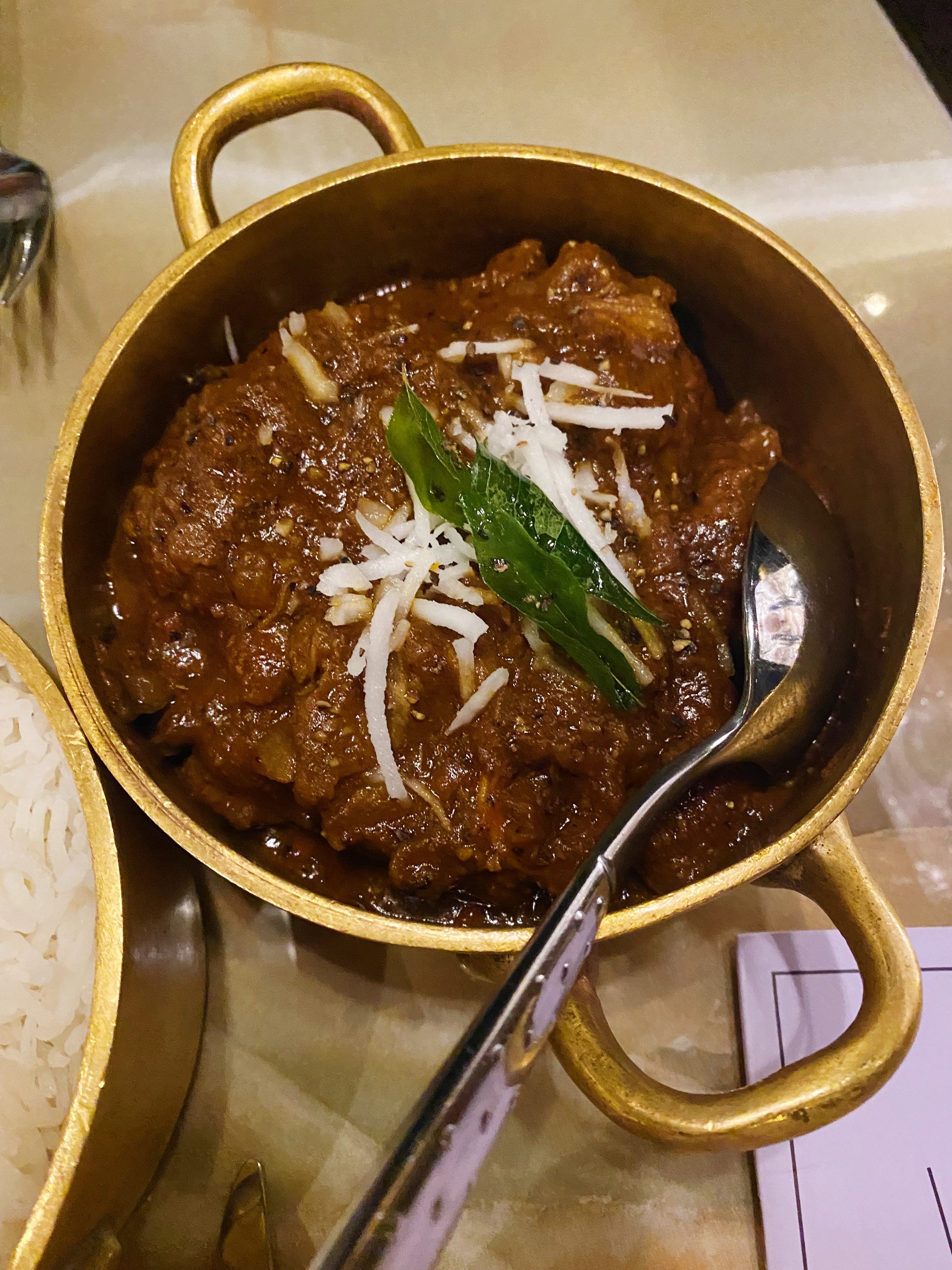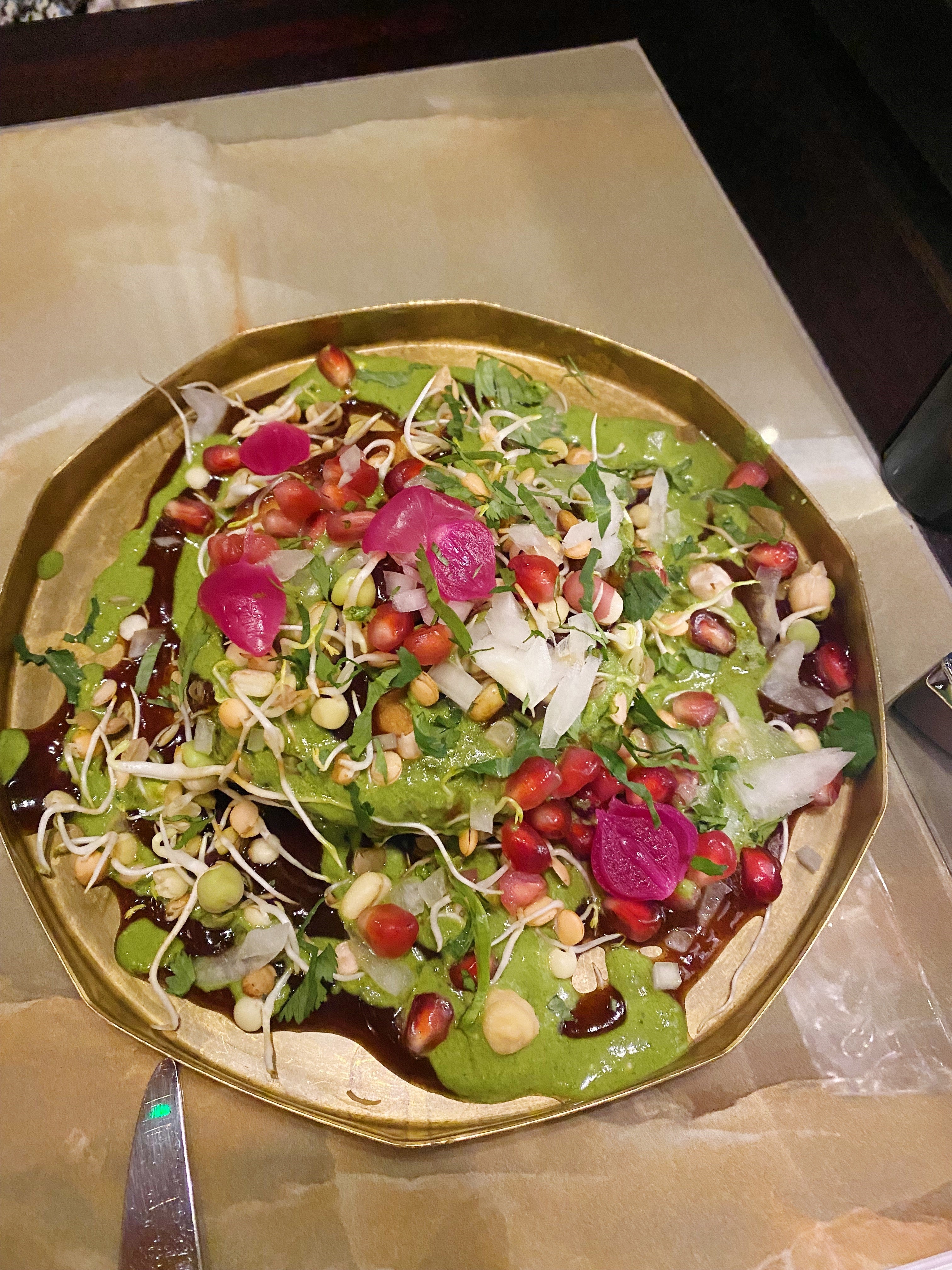Manthan, Mayfair: buoying food that stays close to its roots
Rohit Ghai has been part of a generation of chefs that have redefined what Indian food is in the UK’s mainstream restaurant world. Molly Codyre discovers that his latest endeavour, Manthan, solidifies his reputation as one of the capital’s best chefs


Your support helps us to tell the story
From reproductive rights to climate change to Big Tech, The Independent is on the ground when the story is developing. Whether it's investigating the financials of Elon Musk's pro-Trump PAC or producing our latest documentary, 'The A Word', which shines a light on the American women fighting for reproductive rights, we know how important it is to parse out the facts from the messaging.
At such a critical moment in US history, we need reporters on the ground. Your donation allows us to keep sending journalists to speak to both sides of the story.
The Independent is trusted by Americans across the entire political spectrum. And unlike many other quality news outlets, we choose not to lock Americans out of our reporting and analysis with paywalls. We believe quality journalism should be available to everyone, paid for by those who can afford it.
Your support makes all the difference.Rohit Ghai has had an undeniable influence on what Indian food means in London. Cutting his teeth working at Benares, he went on to join JKS Restaurants as an executive chef at the likes of Gymkhana and Trishna. Since being poached by Leela Palace Hotels to open Jamavar, he has launched a number of restaurants, won a Michelin star and generally helped to redefine Indian cuisine in the city.
So it comes as no surprise then that Manthan is such a wonder. Marking a return to Mayfair for Ghai - the borough is the home of both Benares and Gymkhana - the restaurant feels both fitting for the glitzy locale and yet surprisingly down to earth. The compact space imparts a forced familiarity that seems in keeping with the restaurant’s theme - pulling inspiration as it does from Ghai’s childhood in Punjab alongside a culmination of his past culinary experiences. This sees itself represented in dishes that centre homely flavours and cooking styles but ultimately focus on the chef’s immense experience and culinary skill to add a layer of sheen.
Indian food in London - heck, in the whole country - has come a long way in the last decade or so. Where once the choices seemed to be Brick Lane-style curry houses where food is mass-produced and aimed at the boozy hordes or crisp-edged, Michelin-starred establishments that overlap with said curry houses in their attempts to cater to a Western palate, nowadays it is one of the most exciting cuisines to eat in the city (it must be said that there have always been places serving incredible Indian fare from all regions of the country in the UK - especially in the outer suburbs of London - but these were never mainstream and often weren’t frequented by those who don’t make it past Zone 2. If you do want to seek out some of these places, Jonathan Nunn has put together a fairly comprehensive three-part guide of the city’s most essential South Asian restaurants. I recommend attempting to tick them off. I will be too. Nunn possesses an enviable level of knowledge on London restaurants - both off the beaten track and on it - that can only coming with having been born and raised in a place). Rohit Ghai is one of the chefs who has helped bolster this, highlighting regional cuisine that hasn’t been seen in established UK restaurants before and embracing recipes that go back to their traditional roots rather than versions that have been bastardised by decades of bland taste buds and an ignorance of foreign food.

It seems, however, that there is a touch of British influence here. Not in the respect that the food is dumbed down for Western palates, but rather in that Ghai expertly weaves in British ingredients to complement the firmly Indian flavours. Burford Brown eggs find themselves hidden in a fenugreek-heavy onion and tomato sauce, like little nuggets of gold. It is the sort of gratifying dish that satisfies a desire to sip and slurp and yet still manages to surprise - the silken egg yolks enlivening where meat may have weighed down, the spices lingering on your tongue long after each mouthful is finished. Then there was the Osso Bucco - a name that usually evokes images of Italian food - which is nestled into a tiny pot with lime leaf and Sri Lankan Jaffna spices, the meat melting into the residual sauce. My only complaint here would be that the bone made it difficult to scrape enough of this dish out, leaving you to attack at the edges. It was worth it though - a proper effort to reward payoff.
Both curries were preceded, however, by some of the best starters I’ve had in a long time. Pyaaz kachori almost sang to us from the menu - any combination of sweet and sour tamarind and cooling mint is a shoe-in for me, and this was one of the best yet. It appeared on the table as a riotous mound of food, bright green mint sauce mingling with lacquered tamarind, little bulbs of ruby-red pickled onions sitting pretty next to jewels of pomegranate, and all of it topped off with crunchy, nutty bean sprouts, like some kind of culinary Vesuvius. Underneath it was a crisp, golden pastry that managed to hold its integrity despite the party that was going on above.

It was the dahi ke kebab, however, that won. Crumbed and fried cylinders of hung curd were so moreishly tasty I was almost bereft when we emptied the plate in record time. I don’t like to pretend that meat is king in the food world, but it is no secret that vegetarian dishes at many restaurants often feel like an afterthought. At Manthan, they take centre stage - nearly half of the menu is meat-free - and prove that it is the spices and technique that ultimately deserve the trophy when it comes to Ghai’s cooking. To be able to produce these kebabs from hung yoghurt is a prime example - it is not an inherently pleasant ingredient, especially in a form like this (sometimes it seems to hang around in your mouth like a soggy scrambled egg cooked by someone who hates you) and yet here it seems to come into its own entirely. The addition of a lively plum sauce makes a surprising yet welcome change from the tamarind on our competing dish.
The only let down of the meal was the halloumi tikka. While it was unpleasant per se, it felt like a sorry substitute for the classic paneer, the low acidity of the cheese failing to mingle suitably with the subtlety of the spices and the smokiness of the tandoor. This was the sole drawback to what was a vibrantly wonderful meal. Manthan is a restaurant with a menu that feels sure of itself and takes an approach to Indian food that is at once classic yet refreshing. This was my final evening with my sister before she moved back to New Zealand. It was a bittersweet moment - happy that the end of her Cancer treatment means she’s healthy enough to do so, and desperately sad at the loss of my best friend. Manthan managed to distract us both perfectly - this being buoying food that leaves no opportunity for sadness. And if that isn’t a good meal, then I don’t know what is.
Join our commenting forum
Join thought-provoking conversations, follow other Independent readers and see their replies
Comments